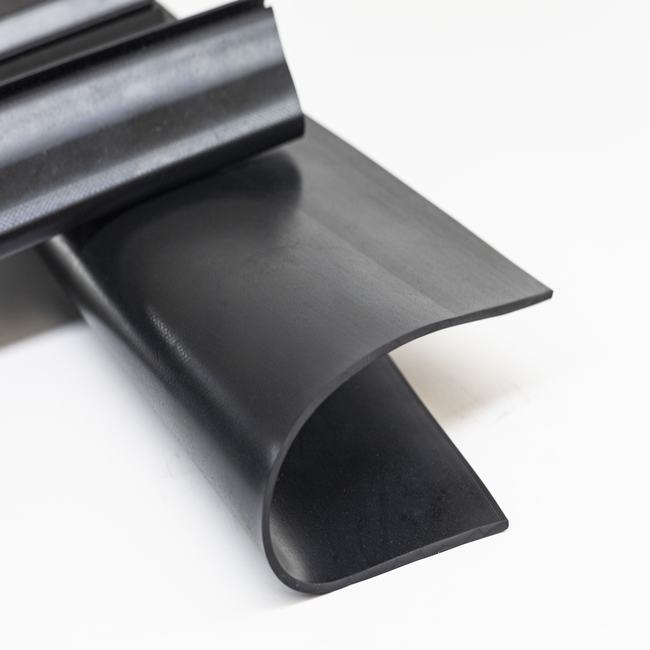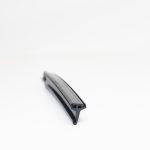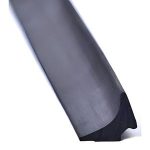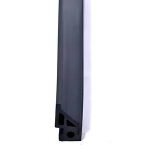Steel door seals are vital components used in a wide range of architectural and industrial applications to enhance the performance, safety, and energy efficiency of steel doors. These seals play a critical role in maintaining the integrity of structures, ensuring they remain secure and weather-tight. Steel door seals are widely used in commercial and residential buildings, as well as in specialized environments such as industrial facilities, hospitals, and laboratories. In this detailed description, we will explore the various aspects of steel door seals, including their types, materials, functions, and applications.
1. Types of Steel Door Seals:
Steel door seals come in different forms, each tailored to specific requirements and applications. Some common types include:
- Threshold Seals: These are installed at the bottom of the door, providing a barrier against drafts, moisture, and pests. They come in various styles, such as vinyl or aluminum thresholds, and can be adjustable to accommodate different floor heights.
- Astragal Seals: Astragal seals are used in double-door applications, creating a seal between the two door panels to prevent drafts and improve insulation. They can be surface-mounted or built into the door.
- Weatherstripping Seals: Weatherstripping seals come in various materials like rubber, silicone, or brush-style designs. They are used to seal gaps between the door and the frame, preventing air and water infiltration.
- Automatic Door Bottom Seals: These seals are typically used in commercial applications and automatically drop down when the door is closed, sealing the gap between the door and the floor. They retract when the door is opened, ensuring ease of movement.
- Gasket Seals: Gasket seals are used in industrial settings to create a tight seal against hazardous chemicals, dust, and noise. They are often made of materials like neoprene or EPDM.
2. Materials:
Steel door seals can be constructed from a variety of materials, depending on the specific needs of the application:
- Rubber or Neoprene: These materials are flexible, durable, and effective at sealing gaps. They are often used in weatherstripping seals and gasket seals.
- Silicone: Silicone seals are known for their excellent resistance to extreme temperatures and UV exposure, making them suitable for outdoor and high-temperature applications.
- Aluminum: Aluminum is often used in threshold seals due to its strength, durability, and resistance to corrosion.
- Brush or Pile Material: Brush or pile-style seals consist of densely packed bristles or fibers that create a barrier against drafts and pests. They are commonly used in weatherstripping seals.
- EPDM (Ethylene Propylene Diene Monomer): EPDM rubber is a synthetic elastomer known for its resistance to ozone, weathering, and chemicals. It is often used in gasket seals.
3. Functions:
Steel door seals serve several essential functions, including:
- Sealing Against the Elements: They prevent the infiltration of outdoor elements such as rain, wind, dust, and pests, maintaining indoor comfort and cleanliness.
- Energy Efficiency: By sealing gaps and preventing drafts, steel door seals contribute to energy efficiency by reducing heating and cooling costs.
- Sound Insulation: In applications where noise control is essential, such as commercial or industrial buildings, steel door seals can help dampen sound transmission.
- Fire Protection: Some steel door seals are designed to resist fire and smoke, enhancing fire safety in commercial and industrial settings.
- Security: Steel door seals contribute to the overall security of a building by preventing unauthorized entry and deterring forced entry attempts.
4. Applications:
Steel door seals are widely used in various applications, including:
- Residential Buildings: In homes, steel door seals ensure energy efficiency, weather resistance, and sound insulation.
- Commercial Buildings: Steel door seals are essential for maintaining a comfortable and secure environment in offices, retail spaces, and public buildings.
- Industrial Facilities: In industrial settings, steel door seals protect against harsh environmental conditions, such as dust, chemicals, and extreme temperatures.
- Hospitals and Laboratories: These environments require specialized seals to maintain cleanliness and control airflow.
- Cold Storage Facilities: Steel door seals are crucial in cold storage facilities to prevent temperature fluctuations and energy loss.
In conclusion, steel door seals are fundamental components in building construction and industrial applications, enhancing the performance and functionality of steel doors. The variety of seal types and materials available underscores their versatility in addressing specific needs related to weather resistance, energy efficiency, security, and more. Whether in residential, commercial, or industrial settings, steel door seals play a crucial role in maintaining the integrity and performance of doors and buildings.






